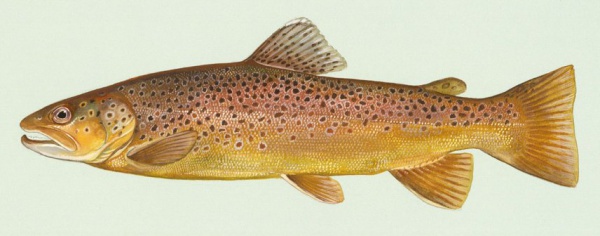Facts About Brown trout
The brown trout, scientifically known as *Salmo trutta*, is a species of salmonid fish native to Europe. Over time, it has been introduced to various environments worldwide. The species exhibits several ecotypes, including those residing in rivers (riverine ecotype), lakes (lacustrine ecotype or lake trout), and migratory forms that venture into the sea (anadromous forms or sea trout). The brown trout was first classified by Carl Linnaeus in 1758. In its natural habitat, it ranges from the northern reaches of Norway down to the Atlas Mountains in North Africa.
Brown trout have successfully established new populations in several regions around the globe, including North and South America, Australasia, Asia, and Africa. Despite their adaptability, they face significant challenges such as habitat destruction, overfishing, and competition from invasive species. Conservation efforts are crucial to maintaining healthy populations.
Although not listed as endangered, some brown trout populations are struggling with threats like habitat degradation, overfishing, and climate change. They play a vital role in their ecosystems, particularly through predation on macroinvertebrates in small streams. Their diverse diet includes aquatic invertebrates, other fish, and even terrestrial insects that land in the water.
Brown trout are highly prized by sport fishers in regions such as North America, South America, Australia, and New Zealand. Their introduction has had varying impacts on local ecosystems but has also contributed to the development of world-class fisheries. Anglers have long been captivated by the brown trout, influencing fishing literature and techniques for centuries. Today, many excellent fishing locations around the world offer enthusiasts the opportunity to enjoy pursuing this esteemed fish.

 Finland
Finland